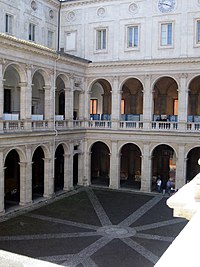
Happy street 1 test.pdf - Free download as PDF File (.pdf), Text File (.txt) or read online for free. Scribd is the world's largest social reading and publishing site. Search Search. Happy street 1 tests pdf. Happy Street DVD worksheets and teaching notes. Here you can download photocopiable worksheets to use with the Happy series DVD and find teaching notes, giving guidance on using the DVD in class and answer keys. Happy series DVD teaching notes PDF (207 KB) Happy Street 1 PDF (1 MB). Students Happy Street Level 1 Happy Street Level 1. Downloadables; Songs & chants; Picture Dictionary; Games. Welcome to the Happy Street Student’s Site. Here you will find lots of fun and interesting activities to help you get the most out of Happy Street. We hope you enjoy using these extra resources. Happy street test - Free download as Word Doc (.doc), PDF File (.pdf), Text File (.txt) or read online for free. Happy Street 1 test.
Italian police was actually a military force since 1982 when Italian State Law 121 came into being and thus the military force was replaced by Italian civil force and thus arranged in a structured manner known as Italian police hierarchy now. The police organization was arranged in a pyramidal structure with the bottom level with greatest width kept on shrinking in the upward direction, being narrow most at the top.New ranks were incorporated and some old ones were chosen as it is. The Italian police hierarchy is described from the highest rank to the lower one as below with a brief description of all the ranks: Italian Police Hierarchy. Chief Commissioner – The highest rank in the Italian police hierarchy is of chief commissioner, a high level commissioned police rank.
The Roman army changed over time. The consuls had the power to recruit troops, but in the last years of the Republic, provincial governors were replacing troops without the approval of the consuls. This led to legionaries loyal to their generals rather than Rome. Before Marius, recruitment was limited to citizens enrolled in the top 5 Roman classes. Oct 23, 2013 The Roma have one of the most dramatic stories in human history, but few people really know their ancient tale of travel, persecution and survival. Here are five intriguing facts about the Romani.
This rank is also referred as chief of police, a covetous official municipal employee. The entire Italian police department is directed to report to the police chief commissioner. Commissioner– Second in command and subordinate to chief of commissioner is the rank commissioner, an ardent professional whose services and duties are owed to the town and people of the town.
Deputy Commissioner – The third highest rank in the, the deputy commissioner also known as deputy chief of police. The deputy commissioner acts according to the orders of the police commissioner. Inspector Top Deputy Commissioner– Subordinate to deputy commissioner, this rank works for the safety of common man and maintain peace and justice in the town.
Inspector Top–Next in the Italian police hierarchy is inspector top. This rank is present in Italian police hierarchy not similar to US police hierarchy where this rank is not available.
Chief Inspector–Chief Inspector reports directly to the inspector top. Chief inspectors are the high ranking senior police officers. Inspector – A mid-level rank in the Italian police hierarchy is of an inspector.
“The Fall of the Alamo”On February 23, 1836, Mexican General Santa Anna besieged Colonel William B. Travis and some 200 Texas independence fighters at a former Franciscan mission known as the Alamo. The Texans were outnumbered and outgunned, but they held out for 13 grueling days until March 6, when the Mexicans stormed the fort and killed nearly all its defenders.

The defeat was catastrophic—Travis, James Bowie and famed frontiersman Davy Crockett all died—but the Texans’ courage under fire helped galvanize their compatriots. General Sam Houston and others used the rallying cry “Remember the Alamo” to whet their troops’ appetite for vengeance, and in April 1836, the Texans routed a superior Mexican army and captured Santa Anna at the Battle of San Jacinto. “Remember the Alamo” lived on even after the United States annexed Texas in 1845, and was later revived by U.S. Troops during the Mexican-American War.
“It was the ugliest sound that any mortal ever heard—even a mortal exhausted and unnerved by two days of hard fighting, without sleep, without rest, without food and without hope.” That was legendary writer and Union army veteran Ambrose Bierce’s description of the “rebel yell,” the notorious battle cry of Confederate forces during the Civil War. This banshee scream was the Confederacy’s calling card for most of the war, but its sound has long been the subject of debate. Later recordings of elderly Southern veterans seem to indicate that it was a shrill yelp that resembled the call of a coyote, though it may have varied from unit to unit.
Whatever it sounded like, the yell was considered an indispensable tool on the battlefield. Lieutenant Colonel A.J.L. Bad mojo gif. Fremantle, a British observer at Gettysburg, noted that, “Confederate officers declare that the rebel yell has a particular merit, and always produces a salutary and useful effect upon their adversaries. A corps is sometimes spoken of as a ‘good yelling regiment.’”.